Qasr IbrimQasr Ibrim (Arabic: "fortress of Ibrim"), the only surviving Nubian archeological site that was not moved, remained in its original position on the east bank but now that "east bank" is on an island in the middle of Lake Nasser. Some inscriptions date use of the site as early as the 17th dynasty, but the ruins seen today are Coptic from the 7th century CE. | 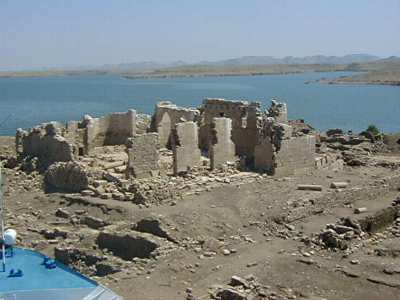 |
DakkaThis temple of Thoth was moved to New Sebua from its original site some 25 miles upstream in the late 1960s. Original construction began ca. 220 BCE and was continued by several Ptolemaic kings and then, in the Roman period, by Augustus and Tiberius. It is the only temple in Nubia that is oriented north-south to parallel the course of the Nile. The huge pylon, unusually separated from the temple proper, was added by the Romans and contains storerooms in its three interior levels. | 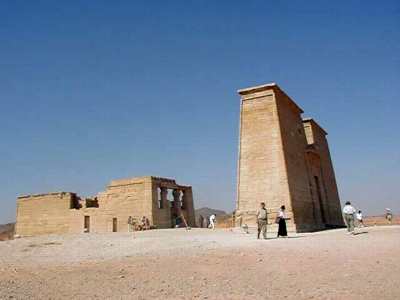 |
DerrPresently located at New Amada, the temple of Derr originally sat on the Nile's east bank a few miles to the south. Dedicated to the sun god, Re, it was built by Ramesses II to observe his first 30-year Sed festival. It included, statues of Ptah, Amun-Re, Ramesses II, and Re-Horakhty as at Abu Simbel. When Christians converted it into a church, much of its decoration was destroyed. | 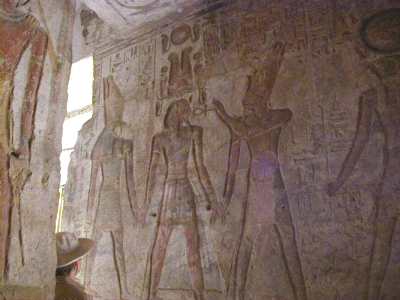 |
KalabshaThe temple of Kalabsha is the largest free-standing temple in Nubia. Originally it stood about thirty miles south of the High Dam at Aswan before being moved to its present site, New Kalabsha, immediately south of the dam. Built in the later Ptolemaic period and continued by Augustus, it was dedicated to Horus-Mandulis (a Nubian god), Isis, and Osiris. Like others of the Nubian temples, it was later converted into a church. | 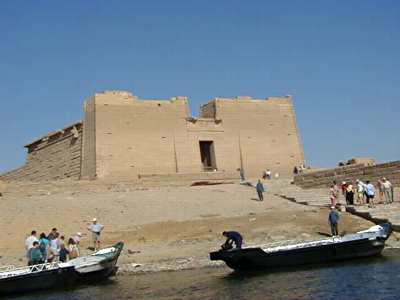 |
Kiosk of QertassiA few steps from the temple of Kalabsha stand the remains of the Roman Kiosk of Qertassi. Originally located almost twenty miles south of the High Dam, it may have been a station on a processional route of the sacred barque of Isis. | 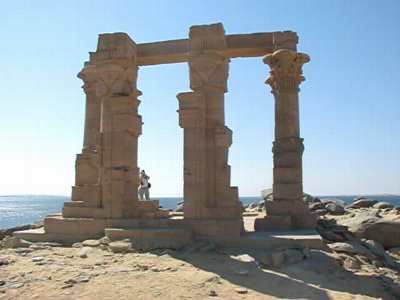 |
AmadaThe temple of Amada, originally located about 112 miles south of the Aswan High Dam, was moved, as a single unit, one and one-half miles to New Amada. It is the oldest of the Nubian temples, dating from the New Kingdom rulers Tuthmosis III and Amenhotep II, with additions by Tuthmosis IV. Then Seti I and Ramesses II did repairs and minor additions. The temple was dedicated to Amun-Re and Re-Horakhty but was desecrated during the Amarna period. However it still contains important historical texts concerning, e.g., a military campaign into Asia. | 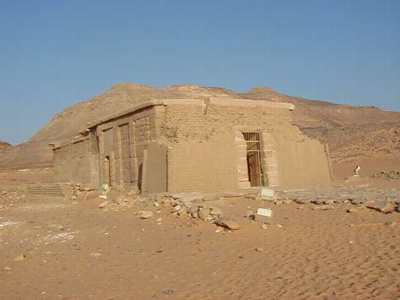 |
Tomb of PennutPennut's title in the administration of Ramesses VI was "Deputy of Wawat and Miam." The only Nubian tomb rescued by UNESCO's project, it presently is located opposite Qasr Ibrim, some 25 miles away from its original site. | 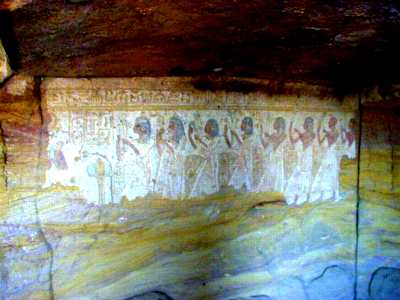 |
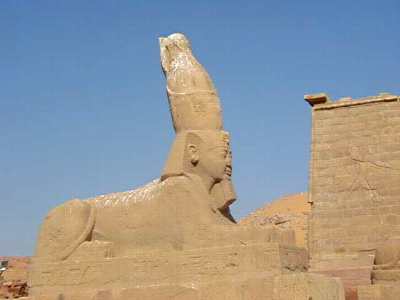 | Wadi al-SebuaThis temple, originally a few miles east of its present location at New Sebua, was built by Ramesses II. It once had three pylons, the third of which survives. In the court past the first (now non-existent) pylon are six human-headed sphinxes wearing the double crown of upper and lower Egypt. In the second court, falcon-headed sphinxes. Then the third pylon, pictured here, with one of the original four colossi of Ramesses remaining. The temple, dedicated to Amun-Re, Re-Harakhti, and the deified Ramesses, was named "Temple of Ramesses-Meriamun-in-the-House-of-Amun." |
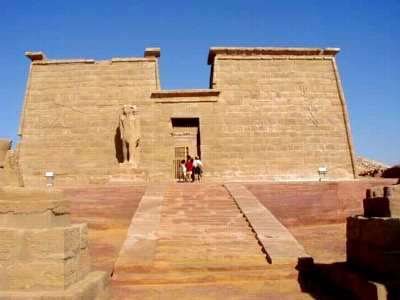 |  |